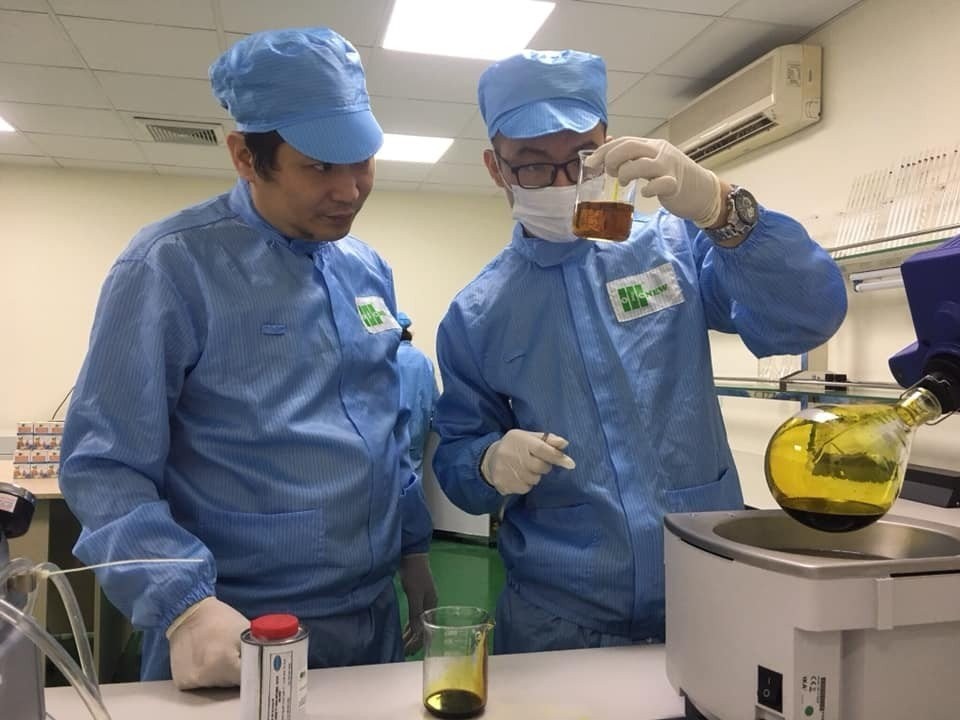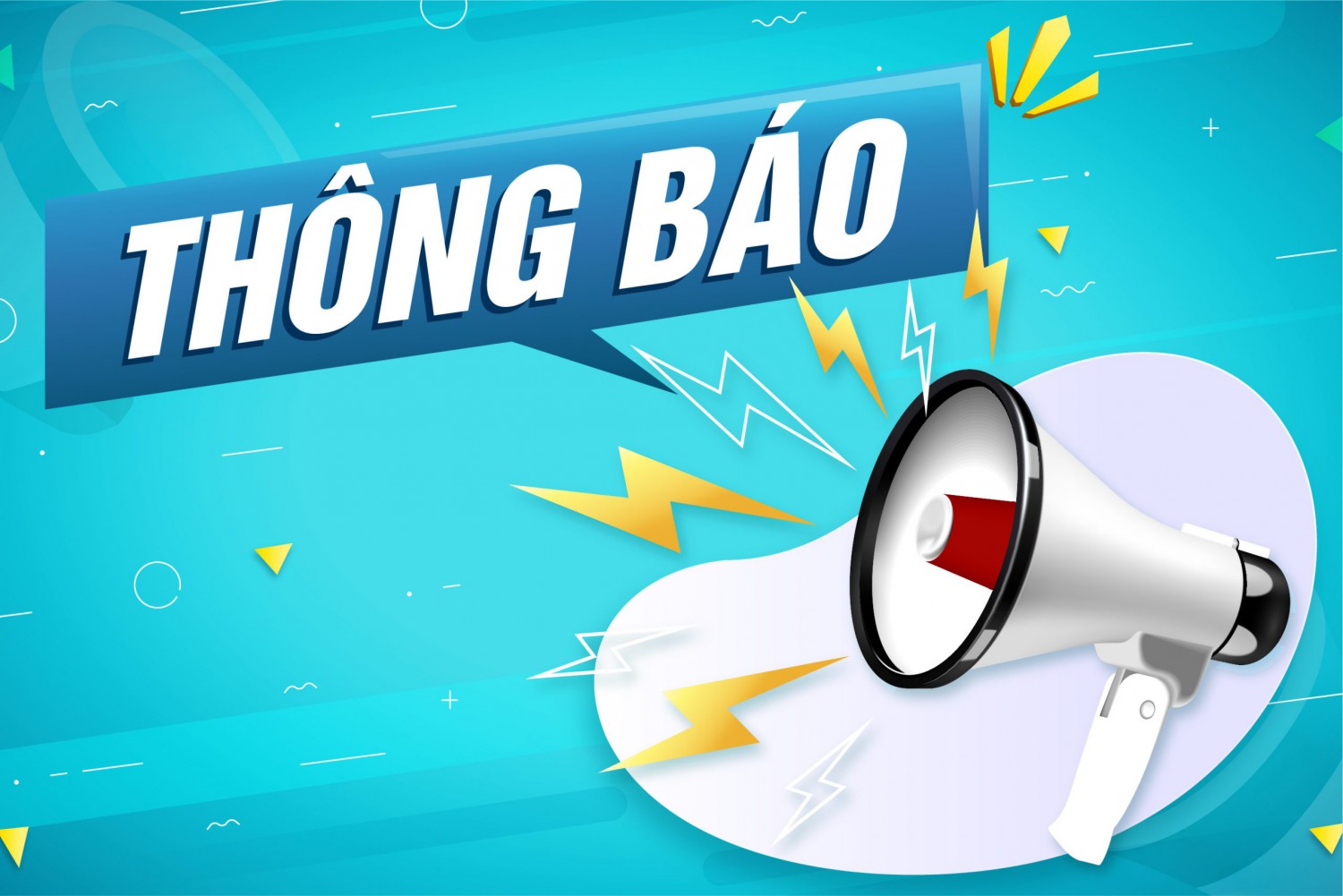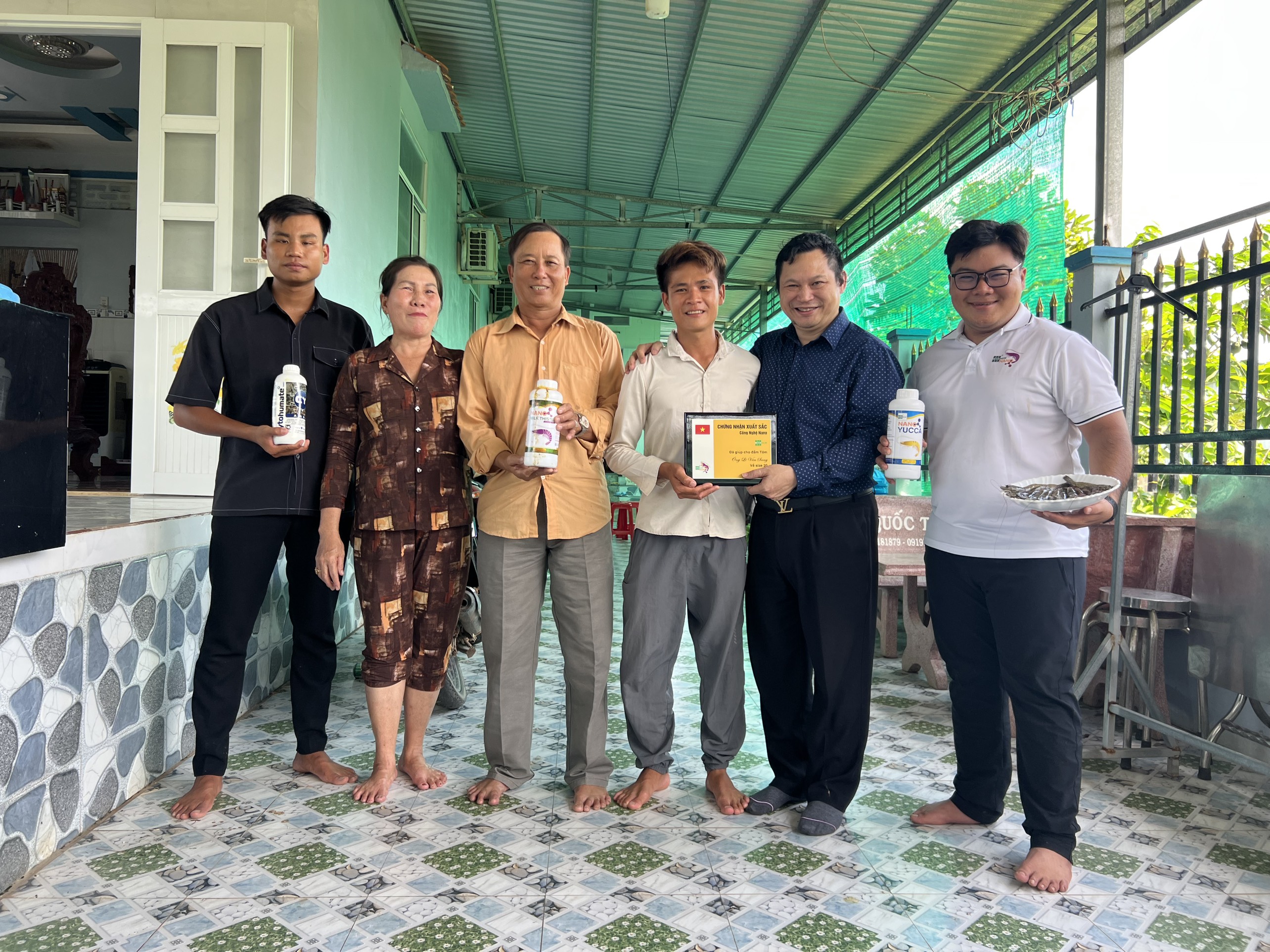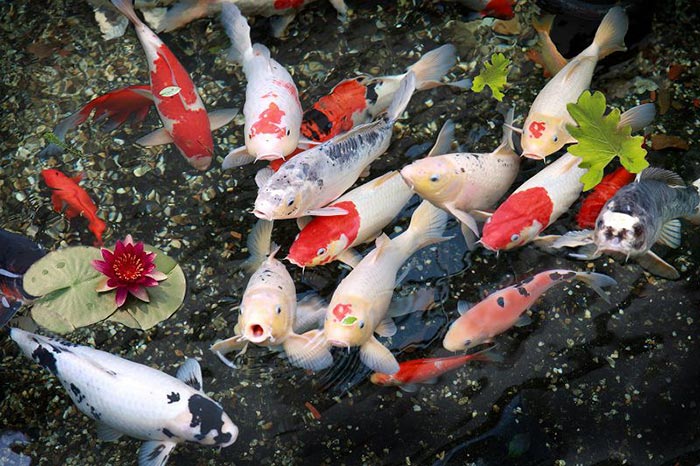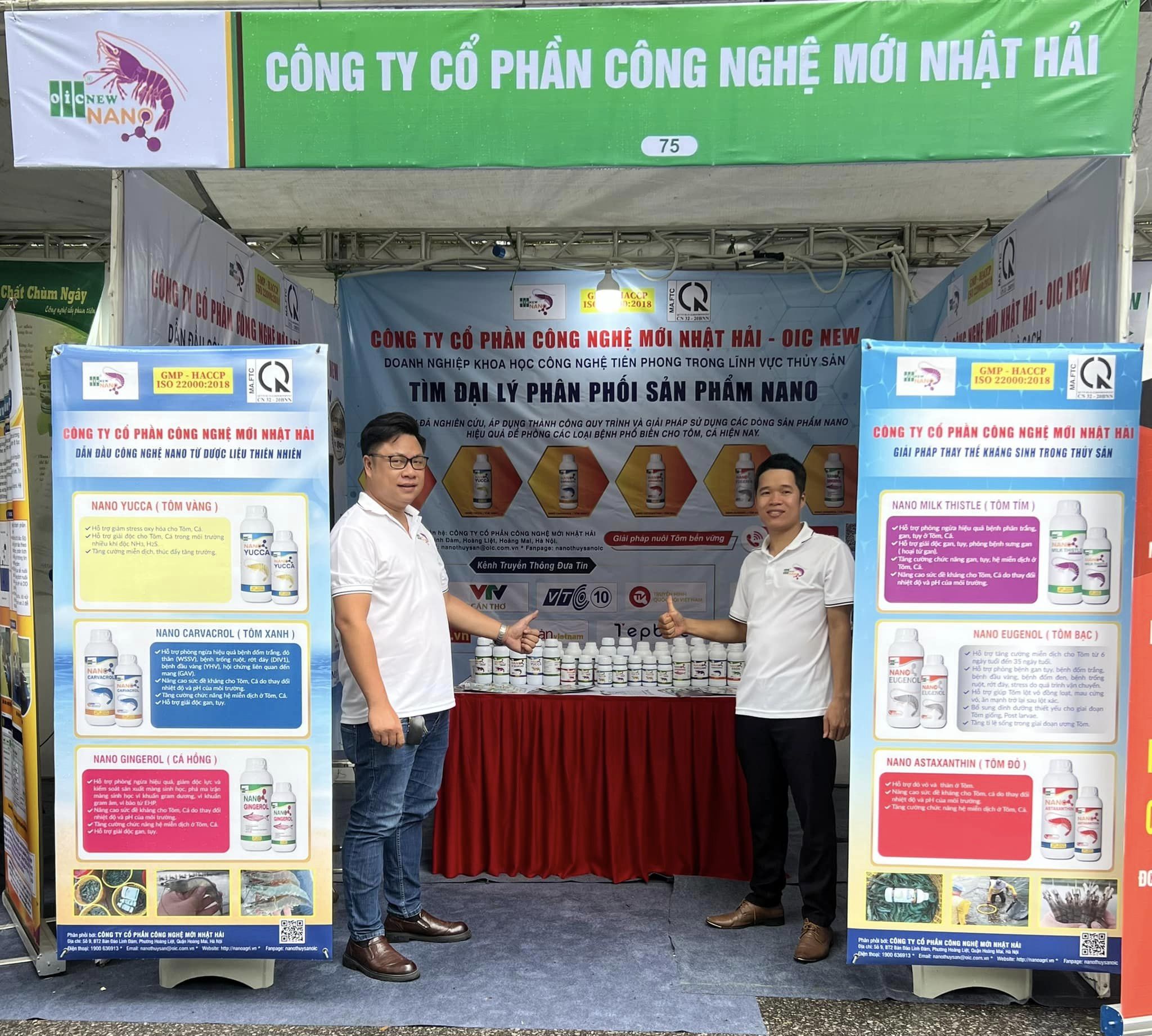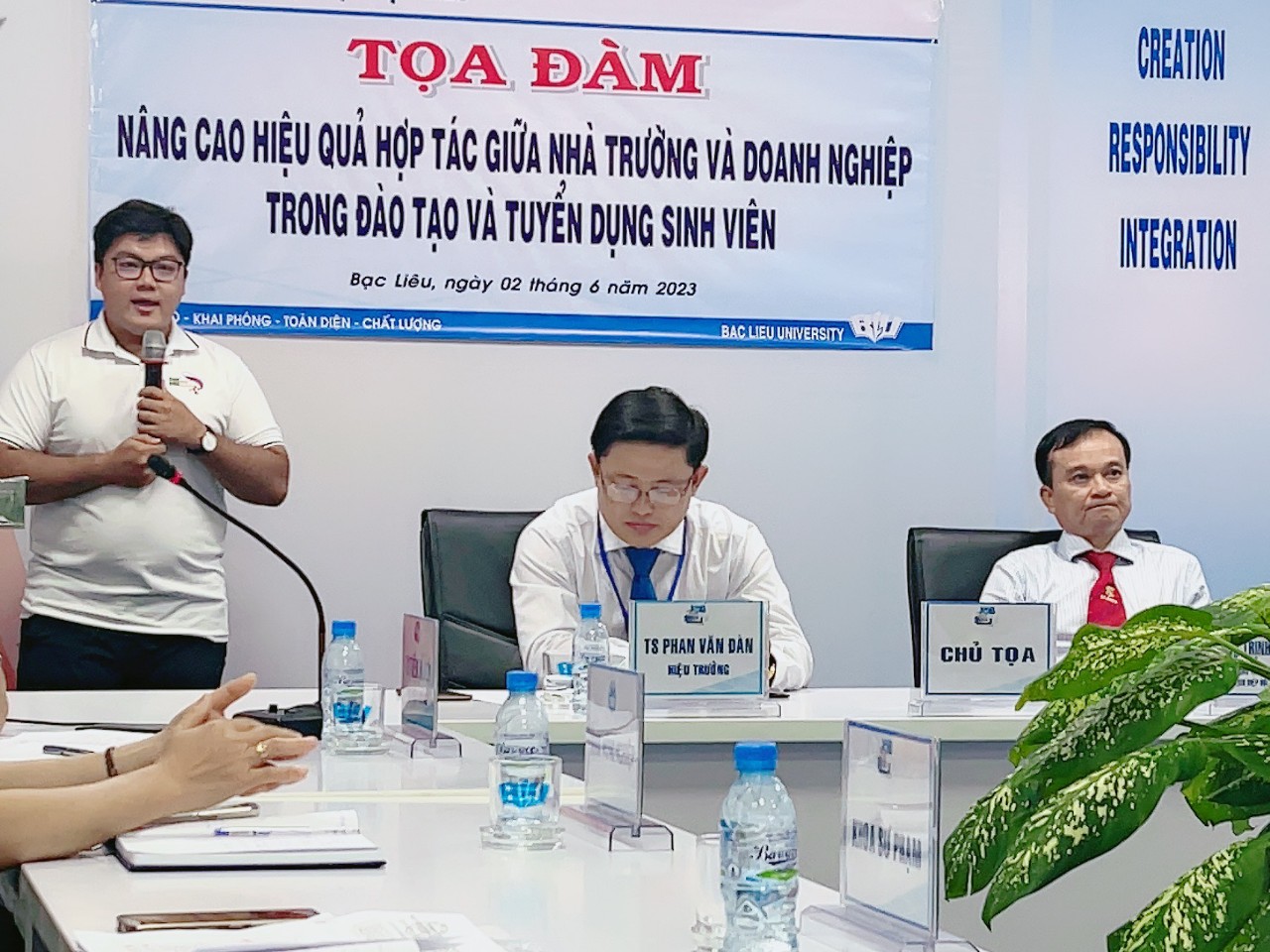Koi fish are a type of carp that easily adapts to new living environments. However, they are quite picky about their water environment and like cleanliness. Koi are very susceptible to parasitic and fungal diseases if the water quality is poor and unhygienic. The article below OIC NEW summarizes 10 common diseases in Koi fish and effective treatments to help the fish stay healthy and grow well.
1. Common disease in Koi fish – Anchor worm
Anchor worm is a common disease in Koi fish caused by a parasite called Lernaea. This type of parasite is shaped like an anchor, firmly embedded in locations such as the skin, gills, tail, fins, eyes, mouth… of Koi fish.
The cause to the illness
The Lernaea (Anchor Worm) parasite causes this disease in Koi fish. They parasitize on the gills of fish. When they reach maturity, the male mates with the female and then dies. The female continues to parasitize and lay eggs that fall into the water, multiply rapidly and then spread the disease to the entire school of fish. Anchor worms suck blood and nutrients from Koi fish, causing the fish to become weak and damaged, causing wounds on the body and over time leading to death.
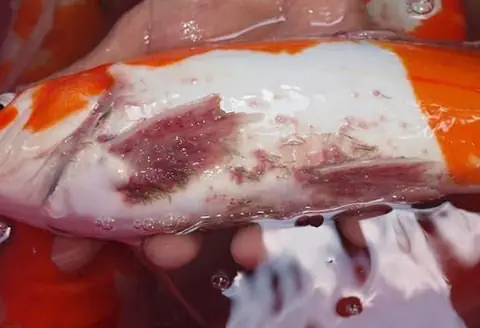
Trùng mỏ neo bám chặt trên da cá Koi và hút máu
Symptoms of anchor disease
- Koi fish rub themselves against the tank wall or objects in the tank because it is itchy, even bleeding, or scratching their skin.
- Swimming slowly, poor appetite, weak body.
- Wounds create conditions for fungi and bacteria to invade and cause other diseases.
- If the anchor worm is parasitic in the mouth, it will cause the fish’s mouth to swell, make it difficult to eat, or stop eating.
How to treat anchor worms in Koi fish
Method 1: Pick up the anchor by hand
- Separately treat sick fish, anesthetize the fish, and use tweezers to remove all parasites from the fish’s body.
- Resuscitate and nourish Koi fish in salt water at a dosage of 300g/100l for 1 week.
- Increase the water temperature to 32 degrees Celsius to kill remaining anchorite eggs.
- Disinfect the entire aquarium, filtration system… with salt water at a dosage of 300g/100l for 7 days.
Method 2: Prevent and treat with Nano Koi products
2. Water lice disease in Koi fish
Water lice is one of the common diseases in Koi fish caused by parasites. They parasitize Koi fish, suck blood and nutrients and then transmit bacteria and viruses that cause infection. The special feature of water lice is that after the parasite will transmit a substance that attracts other water lice.
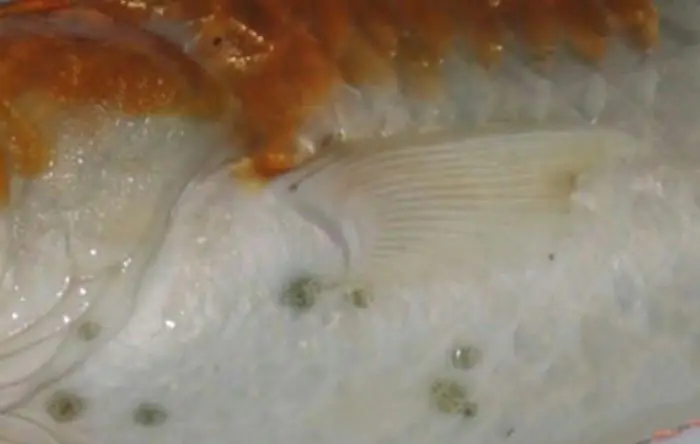
Water lice parasitize Koi fish as moles that can be easily observed with the naked eye
The cause to the illness
Water lice are circular parasites, they mainly attack the fins, gills and body of Koi fish by using their mouths to puncture and cling. Below are the 3 main causes of water lice in Koi fish:
- Koi fish pond is heavily polluted
- Contagion from newly released Koi fish into the pond without proper quarantine standards.
- Unsafe food such as uncooked raw food, unclean food sources or washing with water containing lice.
Signs of Koi having water lice
- On the body, gills and fins of Koi fish, there are dark brown spots like moles. Easily observed with the naked eye.
- Koi fish itch and scratch themselves.
- Large or small ulcers form due to the number of lice attacking. Ulcers gradually grow and cause infection if not treated early.
- Swimming unsteadily and slowly.
- Loss of appetite, loss of appetite, and loss of appetite if lice cling to you for a long time.
How to treat water lice
Method 1: Use propolis
- Isolate sick fish, use tweezers to remove all lice from the fish.
- Spray propolis on the area where the lice are attached to disinfect, kill bacteria, and prevent the spread of infection. Do this continuously for 5-7 days.
Method 2: Prevent and treat with Nano Koi products
3. Common diseases in Koi fish – Skin flukes and gill flukes
Skin fluke resides on the entire Koi fish’s skin, while gill fluke resides only in the fish’s gills. Skin flukes and tapeworms are parasitic in two different locations, but the causes, signs and treatments are relatively similar.
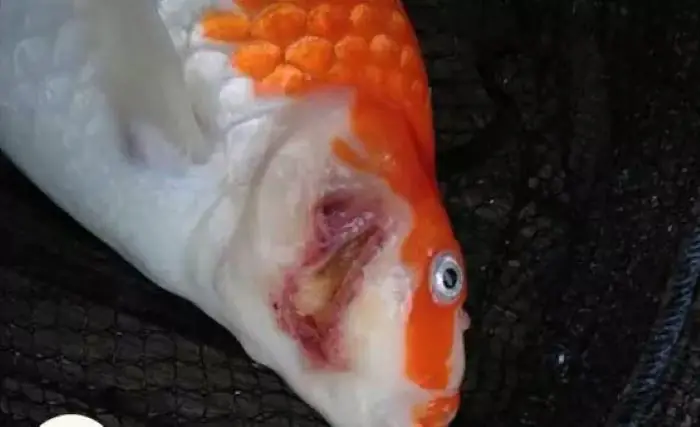
Koi fish are infected with tapeworms that cause ulcers
The cause to the illness
- Poor quality pond, polluted water source, poor filtration system.
- The concentration of organic matter is too high, the oxygen content is not satisfactory.
- Fish stocking density is too thick.
Disease symptoms
- The fish is itchy and scratches itself to get rid of the tapeworms from its body. Even twitching or jumping out of the water due to itching.
- Swimming gait is super crooked, wobbly, and not straight.
- Blood-sucking flukes cause ulcers, damage, and perforation of fish’s gills. If not treated early, the fish may die.
Treatment
- Separately isolate fish with tapeworms.
- Prevention and treatment with Nano Koi products
- Add vitamin C to increase fish’s resistance and help heal wounds quickly.
4. Dropsy
Ruffled scales is a common disease in Koi fish due to many causes, with symptoms of rough fish scales, swollen abdomen, fluctuations in color and pattern… Below are the causes, symptoms and treatments of ruffled scales in Koi fish.
The cause to the illness
- Koi fish suddenly get sick: due to a weakened immune system, creating favorable conditions for bacteria to cause internal bleeding.
- Scaling occurs gradually: Parasites attack or the Koi fish has a growing tumor.
- Polluted water environment, lack of nutrients or poor quality food.
- Koi are stressed, kidney function declines due to parasites entering the internal organs…
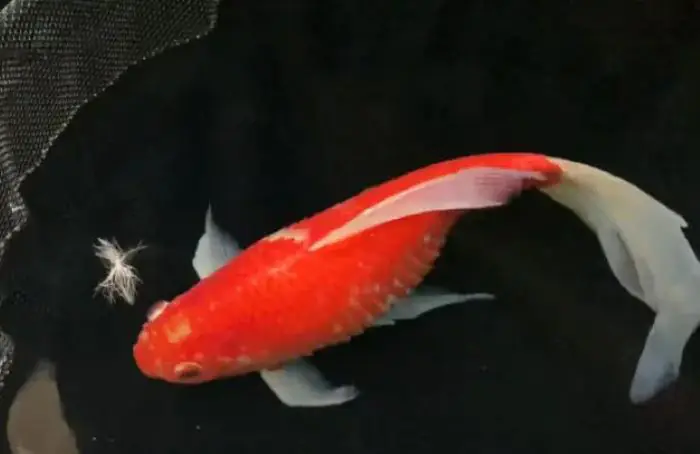
Ruffled dropsy scales in Koi fish cause symptoms of swollen abdomen, ruffled scales, and swollen eyes
Symptoms of scab disease
- The fish’s body is swollen like a balloon and its scales are ruffled.
- Swollen eyes, swollen eye sockets.
- Swimming performance is poor, slow, and even loses the ability to swim if the disease becomes severe.
- The color of the fish’s skin is blurred.
- Shy, poor appetite, swimming near places with lots of oxygen such as on water, waterfalls…
How to treat scabs
Method 1: Take a salt bath
- Isolate fish with ruffled scales.
- Mix granular salt at a dose of 5-6kg/1m3, bathe the fish for about 5 minutes. Bath 1-2 times a day, for 4 consecutive days.
Method 2: Prevent and treat with Nano Koi products
5. Trichodina wheel parasitic disease
Trichodina is a microscopic parasite that can only be observed through a microscope. Trichodina has a round shape with hundreds of small hooks attached to the Koi fish’s body. Trichodina reproduces very quickly, the larvae mature and attach to Koi fish within just 1 day. Therefore, it is very easy to spread to the whole fish population.
The cause to the illness
- Trichodina appears when the water in the Koi fish pond is infected and polluted.
- Stocking too many fish compared to the size of the aquarium.
- Transmission from newly purchased Koi fish with pathogens that are not quarantined.
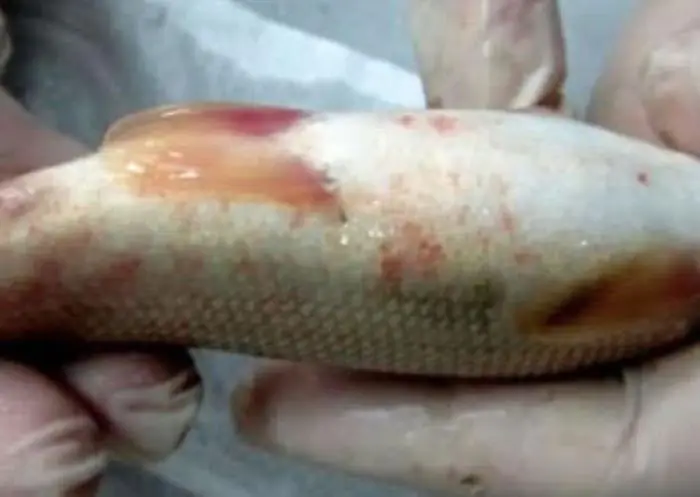
Hemorrhages caused by Trichodina wheelworm
Signs of disease recognition
- Koi fish swim lazily individually, apart from schools.
- Flashing, folding fins, rubbing against the tank wall.
- Skin peeling is caused by Trichodina moving around and eating the skin.
- Secrete excess mucus.
- Skin ulcers, gill damage.
- Skin color changes, fades or turns red due to irritation.
How to treat the disease
- Isolate sick Koi fish.
- Prevention and treatment with Nano Koi products
6. Common disease in Koi fish – Slime slime
Normally, Koi fish secrete a layer of mucus to protect their bodies from attacks by harmful bacteria and microorganisms. However, for some reason, Koi fish lose their mucus and lose this protective layer and are susceptible to other diseases.
Causes of Koi fish losing slime
- Sudden change in living environment.
- The water source in the aquarium contains many toxins or algae.
- The transportation process causes stress to the fish.
- Fish stocking density is high.
- Poor water quality creates conditions for parasites to attack and cause disease.
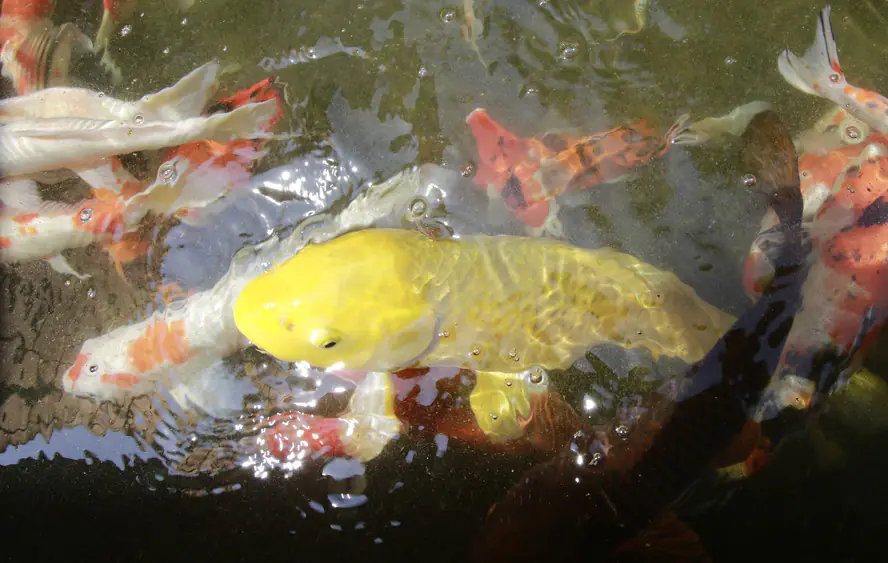
When slime is lost, Koi fish’s skin is often dry, the tank water foams and has a fishy smell
Signs of Koi fish losing slime
- Bloody red veins appear on the fish’s body.
- Fish skin is dry because it has lost its protective mucus layer.
- Loss of appetite, not eating, swimming lethargically.
- The fish tank is foamy and has an unpleasant fishy smell.
Treatment
- Change the water once every 2 hours for the aquarium, each time changing 10%. Change the water until the water is no longer foamy and has a fishy smell.
- Strong oxygen aeration.
- If the tank is too large, making it difficult to change the water, isolate the fish with slime, then mix 25g/1 liter of salt water to bathe the Koi fish for 2-3 minutes.
- Soak sick fish with salt water at a dose of 4-5g/1l in an isolation tank. Change the water once a day. Maintain for 3-5 days.
- Prevention and treatment with Nano Koi products
7. Common disease in Koi fish – Tail rot
Tail rot is a condition in which the Koi fish’s tail is scarred, swollen, and the muscles are necrotic, rotten, and bleeding.
The cause to the illness
- Myxcobacterial or fungal infections are the main cause of tail rot in Koi fish.
- Water quality is polluted due to accumulation of Koi fish waste and unsanitary leftover food.
- The water filter is not working properly.
- Fish farming density is too crowded.
- Other living animals such as dogs and cats playing with fish cause harm to Koi.
Signs of disease recognition
- The Koi fish’s tail is swollen, inflamed, scarred, and peeling
- The muscles of the tail rot, bleed, ooze, and become necrotic if the condition is severe.
- The base of the tail is congested and the fish’s fins are spread wide.

How to prevent tail rot in Koi fish
How to treat the disease
Prevention and treatment with Nano Koi products
8. Gill fungus disease
Gill fungus is a common disease in Koi fish caused by fungi of the Branchiomyces genus. This fungus is found in organic debris in Koi ponds. Gill fungus disease is very dangerous because of its ability to kill fish quickly, after only 24-48 hours and can cause mass fish deaths.
The cause to the illness
- Koi fish ponds are infected with bacteria due to not being filtered regularly or by poor quality filtration systems.
- Excess food pollutes the water.
- Changing seasons, especially spring and summer, cause Koi fish’s resistance to decline.
Symptoms of Koi fish having gill fungus
- The gills appear red spots, white spots and secrete a lot of mucus.
- Breathing is difficult and there is a tendency to swim to the upstream stream or to a waterfall or stream to inhale oxygen.
- Stop eating, swim lethargic.
How to treat gill fungus
- Isolate the Koi fish with fungus and bring it to a separate water tank.
- Increase water temperature above 28 degrees Celsius.
- Prevention and treatment with Nano Koi products
9. Water fungus disease
Saprolegnia Fungus fungus disease appears as white or gray cotton balls anywhere on the Koi fish’s body such as gills, veins, scales…
Causes of water fungus
- The living environment is narrow and the concentration of organic matter in the water is high.
- Koi fish have previous damage due to collision, transportation, trauma or parasites. Open wounds create conditions for water fungus to grow directly on Koi fish tissue.
- Koi fish are stressed due to sudden changes in their living environment…
Symptoms of fungal disease
- Initial symptoms when first infected with the disease: white or gray area appears with small and soft fungal hyphae surrounding it.
- After a few days of illness: The fungal filaments grow into white tufts like cotton fibers, easily visible to the naked eye.
- Fish become lethargic, fold their fins, lose slime, and turn red if the disease becomes severe.
- If pregnant Koi fish are infected with water fungus, the eggs will be opaque and will also have fungal hyphae attached to them.

On the Koi fish’s body, gray spots appear surrounded by fungal mycelium
How to treat water fungus
- Gently move the sick fish to the quarantine tank and aerate it with oxygen.
- Water temperature increased to 30-32 degrees to kill fungi.
- Dilute granular salt at a dosage of 15-30g/l and then bathe the fish for about 15-30 minutes.
- Prevention and treatment with Nano Koi products
10. Common disease in Koi fish – White Spot (Ich)
White Spot (Ich) in Koi fish is caused by a protozoan parasite called Multifiliis Ichthyophthirius. They have cilia that penetrate deep into the Koi fish’s epidermis, clinging tightly to the fish’s skin, fins, and gills.
The cause to the illness
- The parasite Multifiliis Ichthyophthirius is born when the water source is polluted or the water filter is poor.
- Overfeeding Koi fish causes excess food in the water, creating residue that pollutes the water source.
Disease symptoms
- The fish’s fins, skin and gills appear white spots or spots the size of sand grains and spread over the entire body.
- Fish skin secretes a lot of mucus.
- Damaged gill tissue affects the fish’s ability to get oxygen for respiration.
- Dull skin, shyness, swimming apart, poor appetite, and refusal to eat.
Treatment
- Replace all new water in the aquarium.
- Increase the temperature to 30-32 degrees Celsius, use a heating and water filtration system.
- Add 0.5% salt.
- Change 30% of the water in the aquarium every day.
- Prevention and treatment with Nano Koi products
In fact, there are many other diseases in Koi fish such as bulging Koi fish, red Koi fish, cloudy eyes of Koi fish, etc. In the above article, we introduce the 9 most common diseases in Koi fish and how to treat them completely and effectively. We hope that our sharing will help your Koi fish quickly recover from illness and become healthier.
If you want more information about other diseases in Koi fish or have any other questions, please contact Hotline 1900 63 69 13 immediately for the fastest and most accurate advice.









